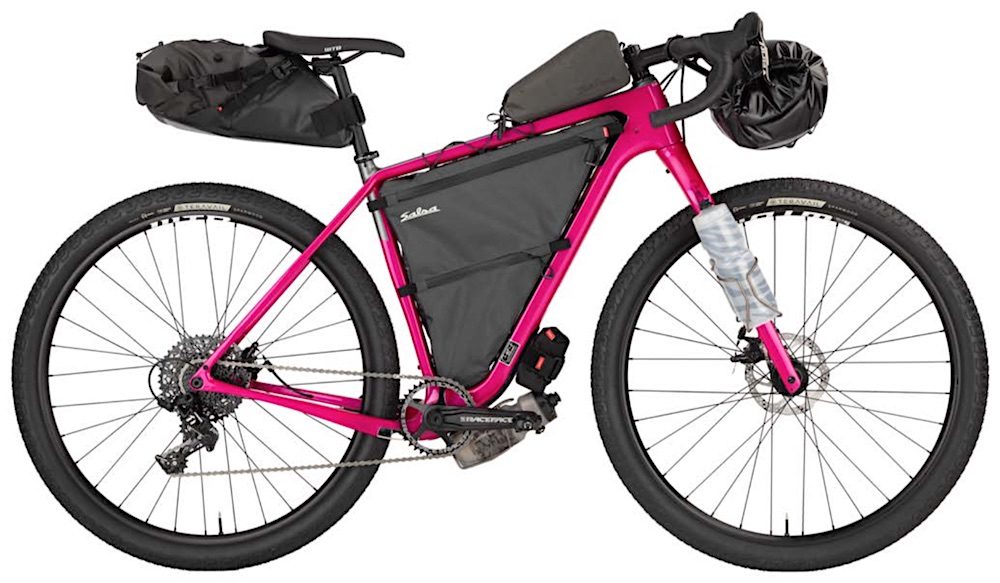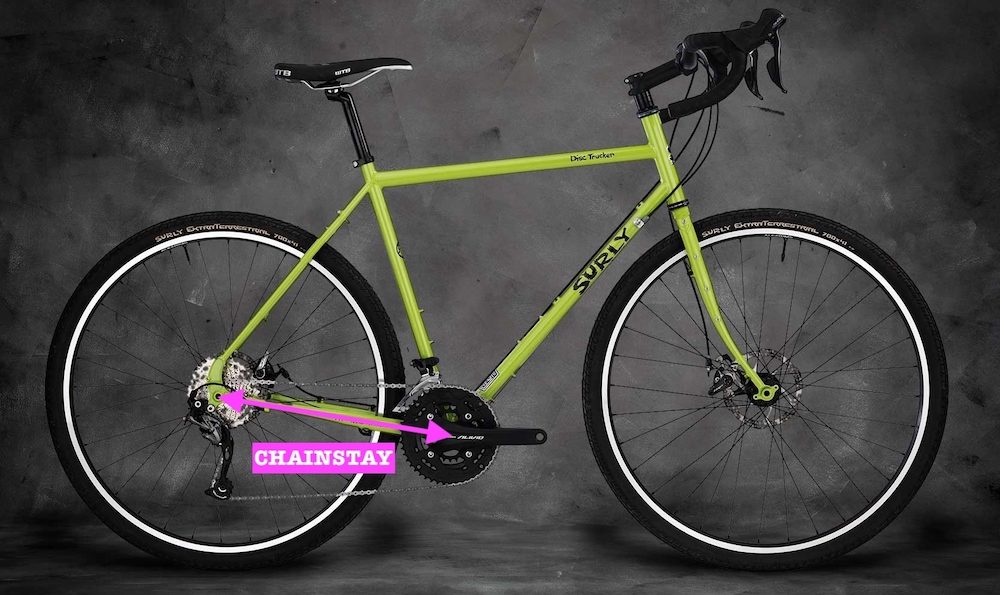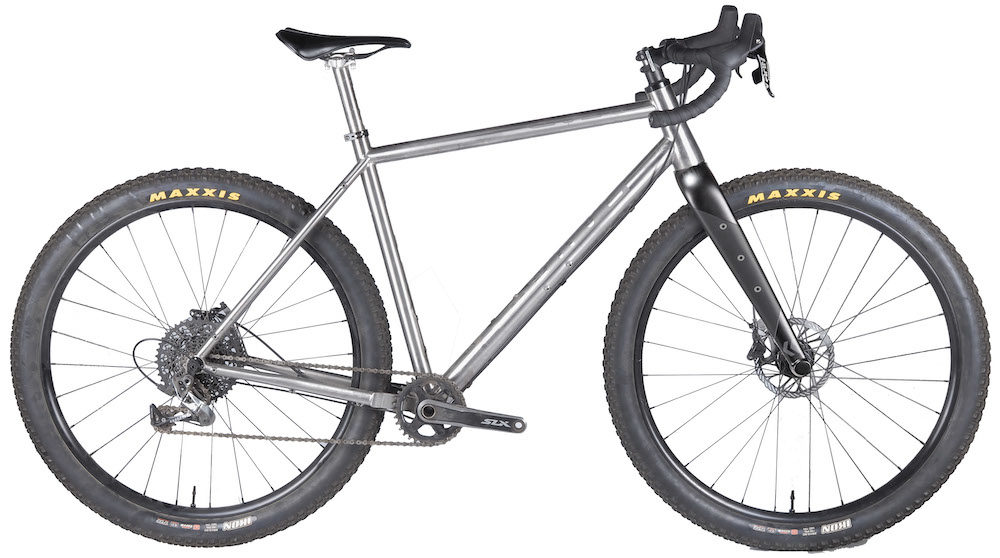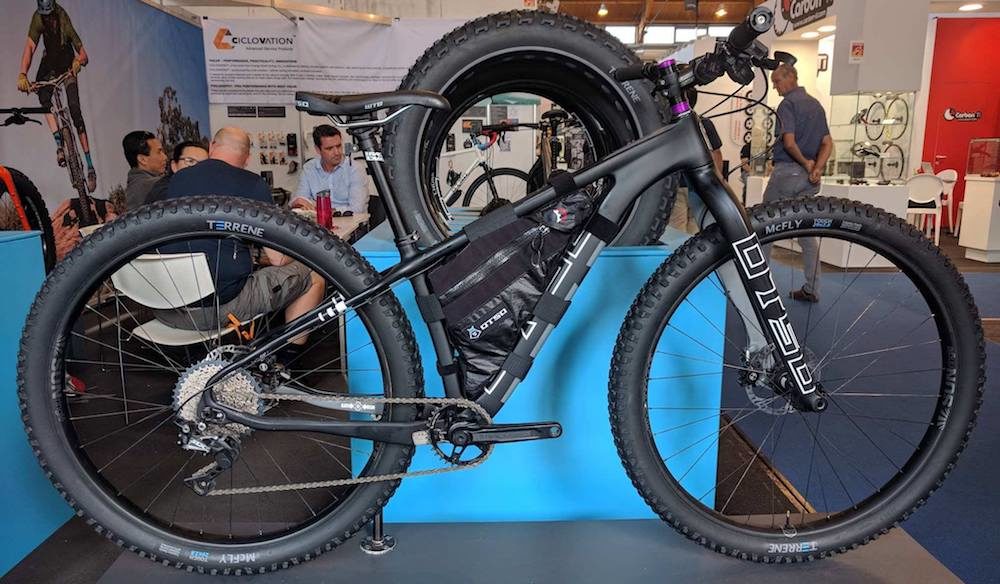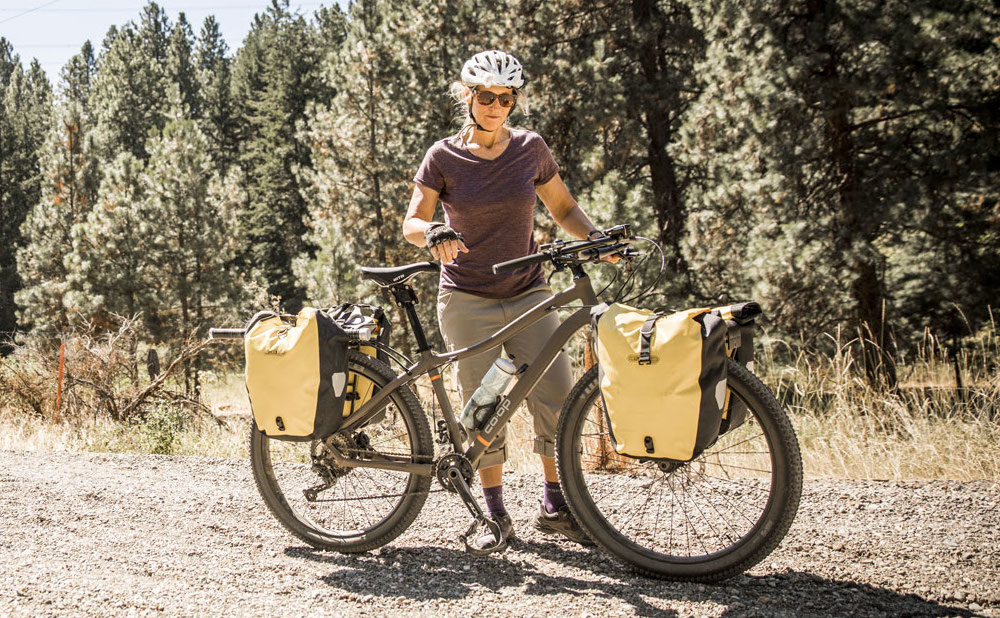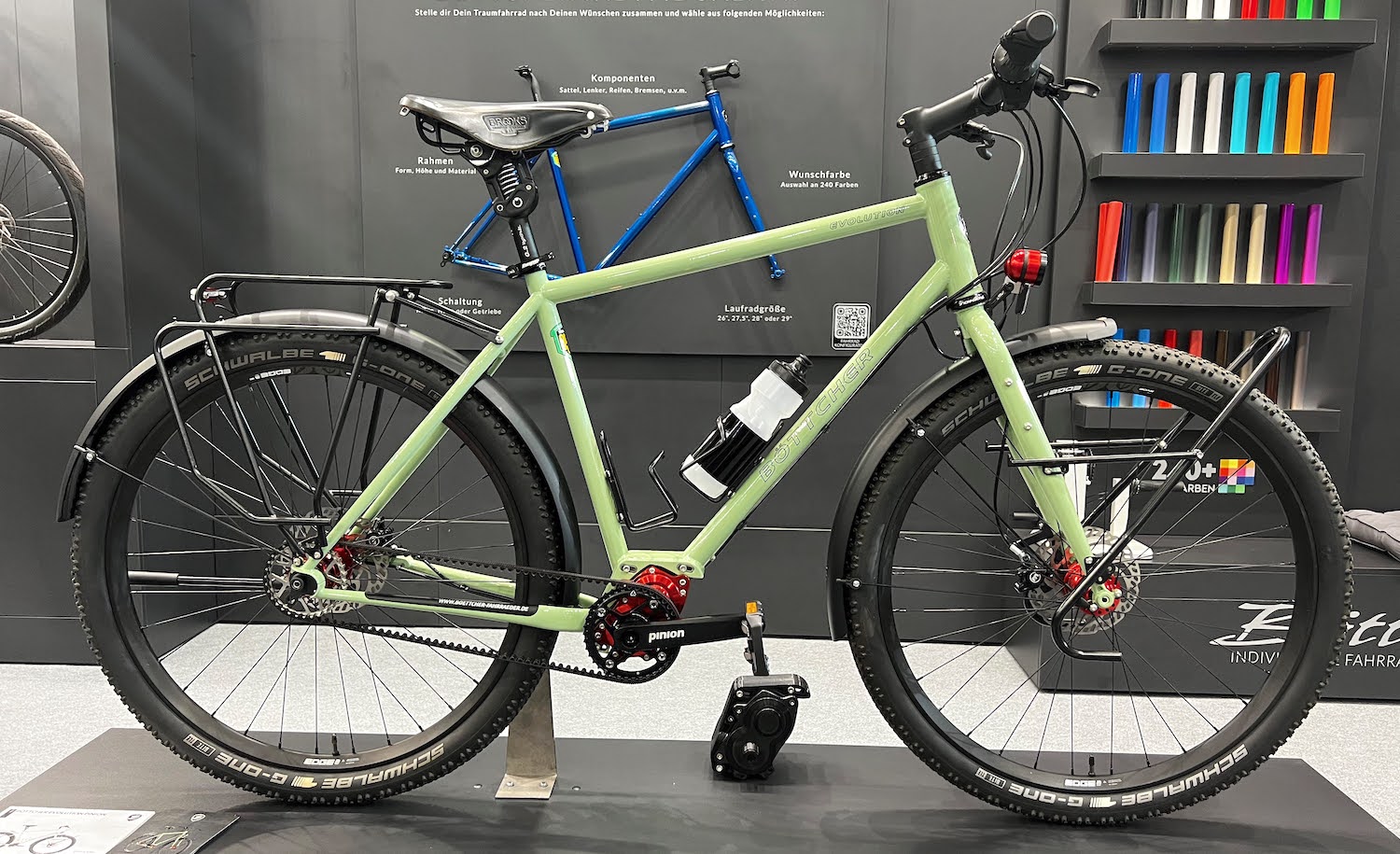Table of Contents
- Bikepacking Bikes Are Less Overbuilt
- Bikepacking Bikes Usually Have Less Frame Stiffness
- Bikepacking Bikes Have Different Mounts
- Bikepacking Bikes Have Shorter Chainstays
- Bikepacking Bikes Are Usually Intended For Off-Road Terrain
- Bikepacking Bikes Have Higher Gear Ratios (Sometimes)
- Bikepacking Bikes Use 1X Drivetrains More Often Than Not
- Bikepacking Bikes Use Less Field-Serviceable Components
- Can A Bike Be Designed For Both Bikepacking and Touring?
- Touring VS Bikepacking Bike Summary
- Which Bike Should You Use?
How is a bikepacking bike different to a touring bike? Is it just the bags? Or is there something unique about the bikes themselves?
I can already sense the keyboard warriors informing me that you can go touring or bikepacking on any bike. While that’s 100% true, it doesn’t mean we shouldn’t optimise a bike for our purposes. After all, you could drive a Ferrari around the world, but is that really the best car for the job at hand?
This article will be a comprehensive overview of the eight bike distinctions that separate a touring vs bikepacking bike.
Bikepacking Bikes Are Less Overbuilt

Touring bikes are designed to handle very heavy loads. The safety test protocol for most touring and bikepacking frames is usually around a rider and equipment weight of between 125 and 136kg – but this testing sets a floor, not a ceiling. While bikepacking bikes are designed closer to the minimum, top-tier touring bikes are regularly designed to handle more weight – even if the manufacturer doesn’t state it anywhere.
That said, we’ll soon see touring bikes advertising higher maximum weights, as bike testing companies are now providing certification right up to 180kg/400lb.
A bike designer not only needs to engineer their frames for the heaviest expected load of any of their customers, but they need to carefully select components that will not break too. As the wheels are the most likely component to fail on a touring bike, you will usually see very heavy-duty rims and higher spoke counts than on a bikepacking bike.
The downside to an overbuilt bike is that it’s heavier. Most bikepacking bikes are in the 10-14kg range, while similarly priced touring bikes are 14-17kg.
It’s worth noting, that the components of your bike don’t really care whether you weight 50kg and carry 40kg of luggage, or whether you weigh 80kg and carry 10kg. However, the location of weight does matter. If your equipment load is high, your frame needs to be stiff too.
Bikepacking Bikes Usually Have Less Frame Stiffness
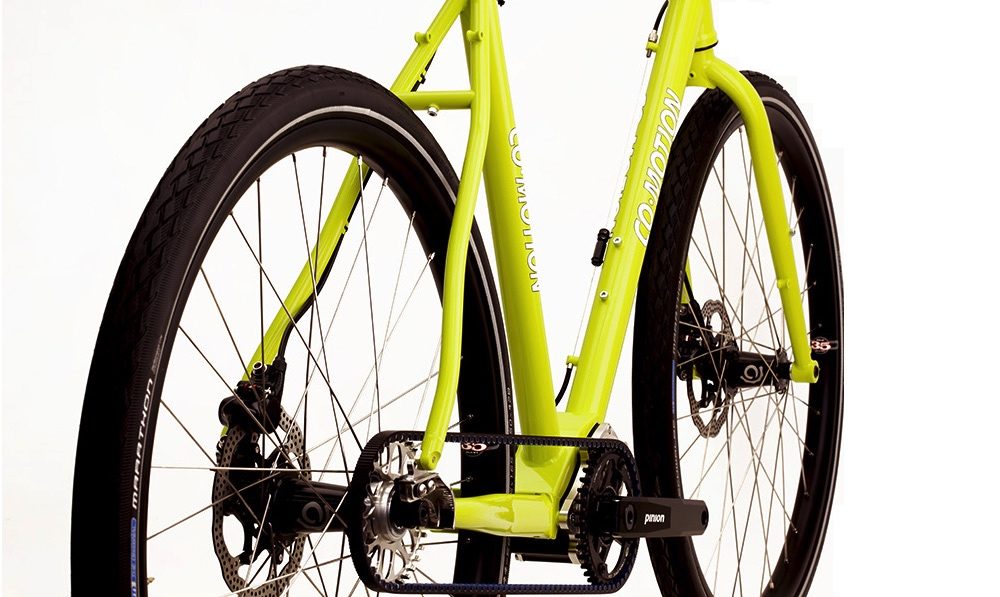
Frame stiffness usually goes hand-in-hand with an overbuilt bike. The top tube and down tube are the most important frame tubes, as they are the medium that resists most of the twisting forces between the front and rear luggage.
Touring bikes regularly use the largest-diameter, thickest-wall tubing. As the loads are more minimal on a bikepacking bike, frame designers can opt for lighter frame tubes, which aren’t as stiff but result in a more ‘lively’ ride when you go out pedalling without any of your luggage.
I characterise ‘liveliness’ as a frame that has noticeable but very minor amounts of frame flex. Optimising the liveliness of a bike requires a look at the riding style, power output and weight of the rider. It’s essentially impossible to create a ‘lively’ feeling bike that is also stiff enough to carry a heavy front and rear load. You can, however, use a lighter built frame, and carry a load at just one end, or you could carry your gear in a trailer instead.
Bikepacking loads can also be very heavy, especially if you’re carrying food for a week and 10 litres of water. If this is the kind of riding you do, you’ll want to make sure your bikepacking rig is just as stiff as a touring bike.
Bikepacking Bikes Have Different Mounts
The mounts are usually different between touring and bikepacking bikes, but the lines are getting pretty blurry these days.
A touring bike will always have rack and fender mounts, while a bikepacking bike will only sometimes have them. A bikepacking bike will almost always have a few cargo cage mounts, while a touring bike may not.
Additionally, bikepacking bikes can have mounts for a direct-mount frame pack and top tube bag, along with occasional mounts on the seatstays and chainstays too.
It’s pretty rare to find a kickstand mount on a bikepacking frame, but that’s ok – it’s easy to lean your bike to its handlebar with narrow bikepacking bags. A bike with panniers doesn’t lay down well, so that’s why kickstands are commonplace on touring bikes.
Bikepacking Bikes Have Shorter Chainstays
A touring bike has long chainstays for three reasons:
1. There is usually a significant rear weight bias due to the larger rear bags, and longer chainstays help to shift the centre of mass further forward.
2. By extending the wheelbase, you get a stability boost at speed with a heavy load.
3. To make sure your heels don’t strike your panniers when you ride.
In comparison, bikepacking bikes usually have 20-30mm shorter chainstays. Given the differing bag designs and low expected load, a bikepacking bike shouldn’t have any problems with heel strike or ride stability. The shorter chainstays will make the bike feel a bit more nimble and it will also be easier to lift your front wheel over obstacles.
If you’ve ever heard people say that short chainstays make a bike accelerate faster, well, it could be true when you factor in a handful of grams saved from the frame – but generally, it’s a pretty non-sensical claim.
Bikepacking Bikes Are Usually Intended For Off-Road Terrain
My Bikepacking Bike Buyer’s Guide bike categories:
Gravel & All Road Bikes – with 700C Wheels
Gravel & All Road Bikes – with 27.5″ Wheels
Off-Road Adventure Bikes – with 29″ Wheels
Off-Road Plus Bikes – with 3.0″ Tyres
Full Suspension Bikes – with 2.2-3.0″ Tyres
Fat Bikes – with 4.0-5.0″ Tyres
Just a quick look through the categories in my Bikepacking Bike Buyer’s Guide, and it’s clear these bikes are generally more purpose-built for off-road terrain. I classify bikepacking bikes based on the wheel specification because this is a key factor in determining how capable a bike will be on off-road terrain.
That said, bikepacking bikes can be purpose-built for the road too. Many of the gravel bikes in my book are really just fat tyre road bikes, which makes them the speediest option for a lightweight road tour.
My Touring Bicycle Buyer’s Guide bike categories:
Long Distance Touring – with Drop Handlebars
Long Distance Touring – with Flat Handlebars
Long Distance Trekking – with Flat Handlebars
Off-Road Touring – with Drop Handlebars
Off-Road Touring – with Flat Handlebars
Light Touring / Bikepacking / Gravel – with Drop Handlebars
Step-Through Touring – with Flat Handlebars
In comparison, a typical bike tour is conducted on much less varied surfaces (predominately smooth roads), so the handlebar type is usually the best place to start when you’re choosing a touring bike.
There is a lot of crossover between bikes! Heavy-duty off-road bikes feature in both of my books, and provided gravel bikes have the mounts for racks and fenders, they often work their way into the “light touring” section of my Touring book too.
Bikepacking Bikes Have Higher Gear Ratios (Sometimes)

A touring bike should ideally have a climbing gear of around 20 gear inches or less. A bikepacking bike can get away with a higher climbing gear, as you are likely to be carrying less weight up a hill.
That said, bikepacking bikes are often focussed around off-road riding where the gradients are both steeper and more slippery. As a result, the best bikepacking bikes will have the equivalent climbing gears as a touring bike, and sometimes less.
Bikepacking Bikes Use 1X Drivetrains More Often Than Not

Across the majority of bikepacking bike categories in my book, 1X drivetrains are definitely the most popular option (42%, 66%, 36%, 70%, 100%, 95%). The notable exceptions are 700C gravel bikes, which are often built around road riding too, and strangely, 29″ off-road bikes.
1X drivetrains offer more tyre clearance and shorter chainstays when compared to a front derailleur setup. While they have larger gear jumps between each gear, on steeper terrain, you won’t need to make fine gear adjustments like you do on the road.
Bikepacking Bikes Use Less Field-Serviceable Components
The expected bikepacking trip duration is often shorter than a touring trip. This typically means that you spend more time around bike shops, so if something goes wrong, you can send parts in for warranty, obtain spares, or get a professional repair.
It’s common to find press-fit bottom bracket bearings, suspension forks, hydraulic brakes, integrated shifters, and titanium or carbon fibre on bikepacking bikes, but these are much less common features on a dedicated touring bike.
A touring bike usually has the most simple parts available, that require the basic tools found in shops anywhere in the world. That said, more complex parts such as integrated shifters and hydraulic brakes have recently proven to be quite reliable, so expect to see more of them on touring bikes in the coming years.
Can A Bike Be Designed For Both Bikepacking and Touring?
Absolutely!
The Co-Op Cycles ADV 4.2 is an excellent example. The bike uses overbuilt components, that are kept somewhat simple (thumb shifters!). It has super low gear ratios (16″ climbing gear!), is very off-road capable (3.0″ tyres!) and has provision for touring racks and fenders, or cargo cage bags.
The build is tough and it shows, with its 16kg/35lb weight. The frame geometry is much closer to a touring bike, with a long wheelbase and upright handlebars. You could set the bike up with panniers for a long tour, or alternatively, as a lighter and faster off-road setup.
Touring VS Bikepacking Bike Summary
TOURING BIKES:
- Tougher frames and components
- Stiffer frames to handle higher loads
- Ride great with luggage
- Lower gear ratios on average
- Rack and fender mounts at a minimum
- Simple components
BIKEPACKING BIKES:
- Less overbuilt frames and components
- Reduced frame stiffness for lighter loads
- A more ‘lively’ ride unloaded
- Slightly higher gear ratios on average
- Cargo cage mounts at a minimum
- More advanced components
Which Bike Should You Use?
I need to re-iterate: you can use whatever bike you want for touring and bikepacking!
But if you want to optimise your setup, you should consider your total load, the surfaces you will ride, the steepness of the terrain, the bag setup you prefer and whether you will have access to spare parts or workshops with the appropriate tools.
A decent bikepacking-touring hybrid is an off-road bike that’s overbuilt, has generous tyre clearances, and mounts for racks, fenders and cargo cage bags.


